Making yards more diverse can reap big environmental benefits
Substituting native plants for turf grass saves water while helping people and wildlife

Yards don’t have to be big, flat expanses of grass. This one in Maine is filled with a variety of wildflowers.
coastalpics/iStock/Getty Images Plus
Share this:
- Share via email (Opens in new window) Email
- Click to share on Facebook (Opens in new window) Facebook
- Click to share on X (Opens in new window) X
- Click to share on Pinterest (Opens in new window) Pinterest
- Click to share on Reddit (Opens in new window) Reddit
- Share to Google Classroom (Opens in new window) Google Classroom
- Click to print (Opens in new window) Print
This is another in our series of stories identifying new technologies and actions that can slow climate change, reduce its impacts or help communities cope with a rapidly changing world.
When you walk through a neighborhood, what do you see? In the United States, it will likely be a few trees and shrubs amidst large areas of grassy lawns. These big green carpets might look pretty. But a plain expanse of grass is an ecological wasteland. It’s filled with just one type of plant — a species that doesn’t support insects, birds or other wildlife the way a natural ecosystem would.
But increasingly, people are turning to alternatives — ones that better support nature and us.
Lawns as we know them started in England back in Medieval times. At that time, most people had to grow their own food. A big expanse of grass would serve as a display of wealth; these people could afford to have land without crops. The grasses planted back then were native to England. They grew well with that nation’s soils, ample rains and cool temperatures.
Those same grasses now cover lawns across the world, from Europe and the United States to Australia. Although they did well in England, they’re not as well adapted to places with different climates and levels of soil nutrients.
That means it can take a lot of work to maintain these yards. People tend to add fertilizers to keep their lawns lush and green. They water regularly, because these grass species can’t handle hot summers or places with little rain. People may even use chemicals to keep out unwanted plants (weeds) and pests.
All those activities use up or pollute much-needed fresh water. Both are problems, especially in the face of ongoing drought. A runoff of pesticides and fertilizers can also harm the ecosystems in streams.
That’s why a growing number of people are rethinking lawns.
What does that mean? Allowing a greater variety of plants and animals to flourish in these spaces could save water, experts say. It could also reduce chemical pollution. Yards planted with more diverse species could make for healthier ecosystems with more pollination and pest control.
In the end, such changes should benefit people and wildlife alike.
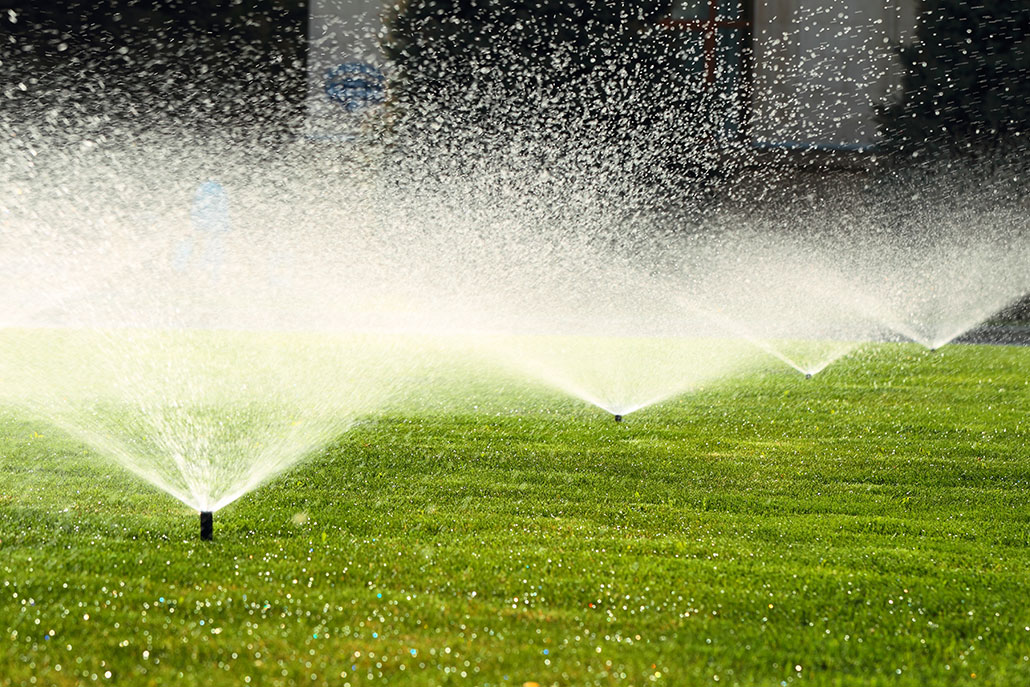
Embracing drought-tolerant native plants
On average each day across the United States alone, people use an estimated 34 billion liters (9 billion gallons) of water on their yards. At the same time, much of this country is experiencing a decades-long drought. People in Florida, California and much of the western United States can’t water their lawns — or can’t water them as often as they’re used to. These lawns may not die, but they also won’t look green and lush.
Both homeowners and researchers have been looking for alternatives.
Brooke Moffis is a graduate student at the University of Florida in Gainesville. She works with Basil Iannone in the school’s lab on the ecology of residential landscapes. “One of the ultimate goals of some of Brooke’s work stems from the need to conserve water,” Iannone says. One way to do that is to fill a lawn with a variety of native plants. He recommends focusing on ones that evolved in dry conditions, rather than keeping those thirsty English grasses.
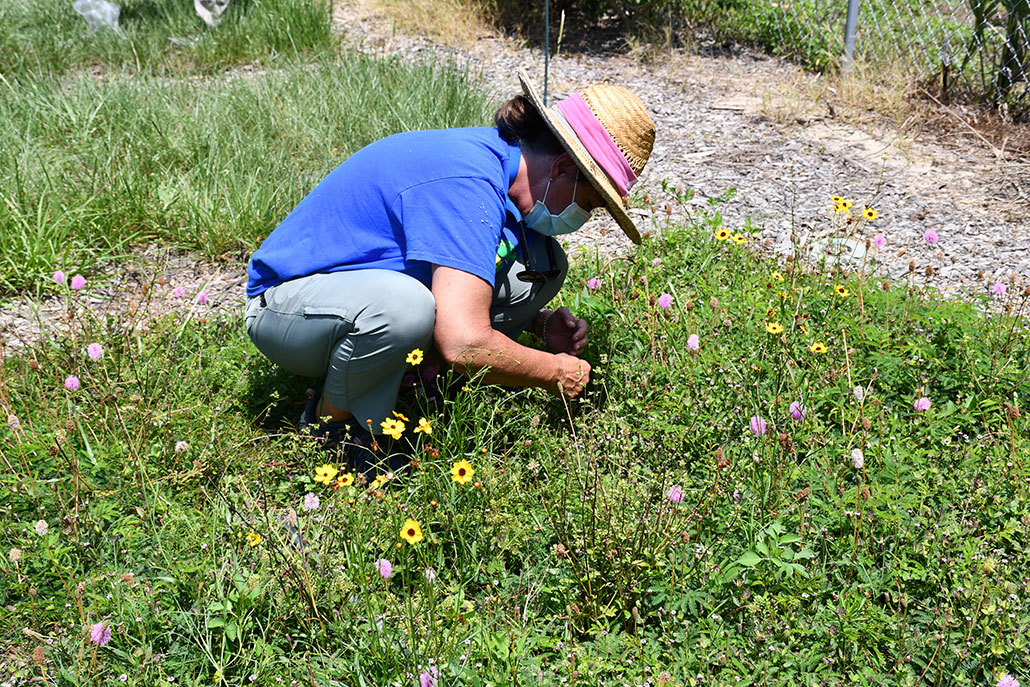
People often think of lawns as grass and nothing else. When a lawn is planted with just one species, it’s called a monoculture. But “we don’t need it to be a monoculture to serve the function of a lawn,” Iannone says. Adding native plants, he says — including some that many people consider weeds — can make for a healthier outdoor space.
Imagine you’re a hungry insect. If you eat nectar or pollen — as many bees, butterflies, beetles, moths, ants and other insects do — a grassy lawn isn’t going to feed you. It would be like going to the grocery store and finding aisle after aisle of one kind of food. And it’s a food you either can’t eat or don’t particularly like.
A yard brimming with a variety of flowering plants would instead seem like a welcome buffet. The different pollens and nectars in these many flowers would make sure you — and other nearby insects — had plenty to eat. That’s the idea behind adding flowering plants to existing lawns, such as clover, purslane or pennywort.
No longer “weeds”
In nature, there’s no such thing as a weed.
Plants naturally live in diverse communities. It’s not surprising, then, that various species will regularly pop up in grassy lawns. Landscapers refer to plants naturally showing up where people don’t want them as weeds.

People often respond to such plants by hitting them with a toxic chemical. But it’s possible to grow lawns without relying on such treatments. Instead, invite in hardy plants that not only feed animals, but also need less water.
There are other perks to embracing so-called weeds. “You’re creating a healthier environment where people can walk without worrying,” Iannone says. There’s no need for those signs telling people to keep off the grass due to chemical treatments.
Iannone and Moffis decided to start changing how people think about weeds.
A pamphlet they developed for Florida yards describes the benefits of “weeds” native to that state. They’re also studying the ecological benefits of lawns with flowers that most people would label as weeds. Their experimental plots include drought-tolerant grasses that can handle Florida’s high temps. Also in the mix are tough, low-growing wildflowers native to the state. Those flowers can be mowed and walked on.
So far, the researchers have found that plots with flowers attracted a greater diversity of pollinators. Diverse lawns also covered the ground better than grass-only plots. That helps hold moisture, so that the plants there need less water to thrive.
Welcome pollinators!
Pollinators help many plants reproduce. One-third of our food crops, for instance, need pollination — everything from the tomatoes in ketchup to the alfalfa used to feed dairy cattle (so we can get ice cream). Even if your family doesn’t have a vegetable garden, other plants need a variety of pollinators to make healthy seeds for the next generation. And some pollinators, such as butterflies, may travel long distances. These will need to find food along the way.
Green spaces, including lawns, can provide important dining rooms for pollinators and other urban wildlife, notes Sheryl Hosler. She’s a graduate student in urban ecology at the University of Illinois Chicago. “For a long time, cities were treated as biological deserts,” she says. “But there are lots of things living in the city besides people.” Hosler wanted to know how our yards affect which insects stop by, specifically bees.
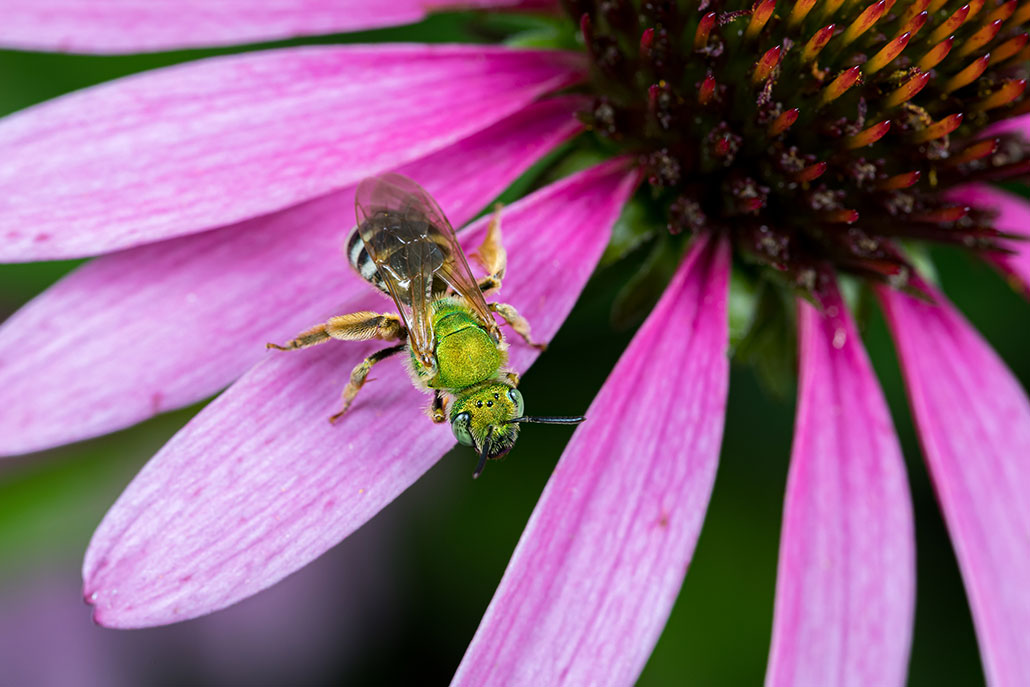
To find out, she went door to door in Chicago neighborhoods. At each home she asked people to let her study their backyards. Most urban ecology studies look at front yards; they’re easy to access. “Backyards,” Hosler says, “have not been studied that much.” Yet, she notes, those front and back yards “probably look very different.”
She recorded the types of plants in backyards and tallied their flowers, both individual blooms and the number of flowering species. She recorded plant heights and flower colors. And she recorded bees — honeybees, bumblebees and a wide variety of other native bees.
In a final step, she measured how effectively those bees were pollinating plants. To do this, she placed pots with cucumber plants in each yard she studied. “Cucumber plants literally cannot make seeds without the help of insect pollinators,” Hosler says. When more pollinators move pollen from a male flower to a female one, the resulting cucumber develops more seeds.
“I can collect the fruits, scoop out all the seeds and count them,” she explains. “The number of seeds created by the cucumber plants in each site gives me an idea of how good the bees were at moving pollen around.”
“The higher the diversity [of bees], the higher the number of seeds,” she now reports. That suggests those bees are “doing a good job moving pollen between the flowers.”
Yards with diverse bee communities also had a variety of flowers in their lawns and gardens. It’s “like a buffet,” she notes. “Every bee might have different preferences. The more diverse the flowering plants in your yard are, the more likely you are to have a diverse bee community.”
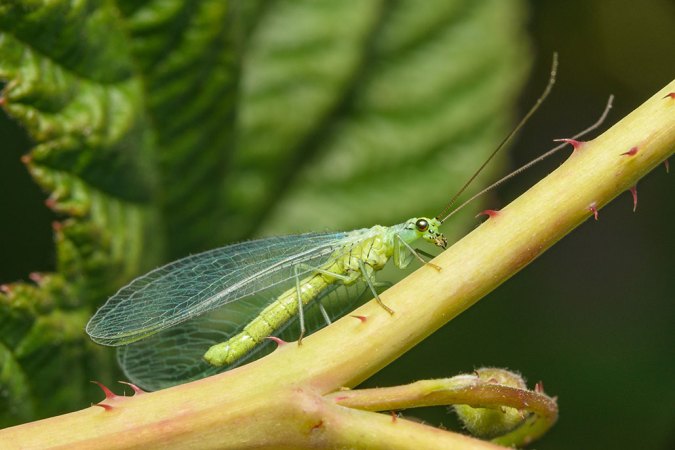
Pest control
Yards with many plant species offer benefits beyond pollination. A diverse ecosystem invites in many types of birds, mammals and other animals. That includes insects that prey on pest species. Ladybugs and lacewings, for example, eat aphids, which can damage a wide variety of plants. And chinch bugs cause huge amounts of damage to people’s grass. But if there’s a nearby garden that supports big-eyed bugs, those predators will keep the chinch bugs under control. Now people won’t have to spray chemicals to get rid of them. Mother Nature will fix the problem.
Incorporating shrubs and trees into yards also aids pest control. “If you’re making this nice habitat for birds, then [those birds are] going to also help out by doing what a lot of these songbirds do best — which is eating just a ton of insects,” says ecologist Megan Garfinkel. She, too, works at the University of Illinois Chicago. The key, she says, is to plant species that supply fruit and nuts for the birds to eat when insects aren’t available.
Ecosystems provide other important services, too, she points out. Trees provide shade and store carbon. And people seldom think about the oxygen released by plants. But it’s there in every breath we take.
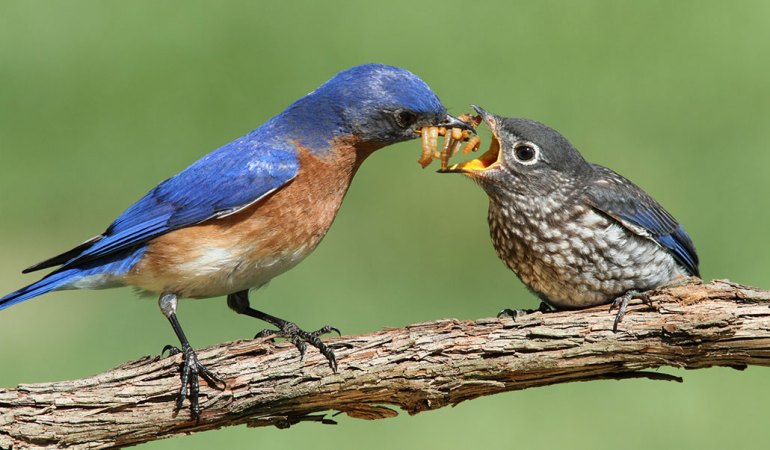
Green spaces even support recreation, such as bird watching and hiking. When there’s wildlife, the area around us becomes more engaging and even relaxing. It’s kind of like going to a national park, but on a small scale close to home.
In urban areas, Garfinkel says, “there are all these types of benefits that wildlife can provide to us.” But at the same time, she adds, we need to support them.
In cities, the spaces available to wildlife have been “really altered by a lot of the things that we’re doing,” she says — such as constructing buildings, roads and sidewalks. Most wildlife can’t live in large paved areas. But changing how we care for our lawns can help wildlife make use of more urban areas.
Start small
The first step in making a more wildlife-friendly yard may be to do less, Garfinkel says. Mow less often, for instance. Or don’t rake up all the leaves. “That’s less work for us,” she says, and it provides homes and nutrients “for the insects that are living in those leaves over the winter.”
Cut back on watering and fertilizing yards. Rains will now wash less pollution off of them and into streams. Fertilizers and gas-powered mowers can both spew large amounts of greenhouse gases, which contribute to climate change.
Sarah Buckley agrees that such small steps can add up. She is a specialist in sustainable landscapes at the Nebraska Statewide Arboretum in Lincoln. “Maybe we don’t tear up the lawn” and start from scratch, she says. “But we turn off the automatic sprinkler.” You might volunteer to take over the watering. Then watch the weather and turn the sprinkler on only when the lawn needs it.
For a landscape to be sustainable, it has to use resources wisely, Buckley adds. Don’t plant things that need to be watered more than our natural rainfall [can satisfy],” she recommends.
And cut back on weed killers and pesticides. Those chemicals don’t just stamp out wildlife. They can be harmful to people and pets. Spraying a lawn to get rid of weeds can put children at risk for cancer, asthma and cognitive harm, according to the American Academy of Pediatrics.
Doing away with such chemicals is an important first step in changing our lawn care practices. You can play a role by sharing what you know with the adults in your life.
Also, plant more native species. Since they’re adapted to your local climate and soils, they should need little help to thrive. They’re also “ready to provide habitat for the animals and insects that are already there,” Buckley points out.
Feed native species
“if nothing’s eating your garden, then it’s not habitat.”
Sarah Buckley
Keep in mind that many plants bought from garden centers evolved on other continents. They may look pretty, but they may not provide much food for the wildlife native to where you live. They also may not make much nectar or pollen. And their leaves may not nourish the larvae of native pollinators, such as caterpillars.
Of course, many people “don’t want their plants to look chewed on,” Buckley admits. But “caterpillars have to eat something if you want to have butterflies.” She points out that “if nothing’s eating your garden, then it’s not habitat.”
Lawns won’t change overnight. Still, ecologists hope we’ll soon start to see a shift. You can help. Talk with the adults in your life and suggest some changes. Ask if you can turn some grassy corner of the yard into a garden. We need to think of yards as more than just places to grow grass.
“If we could get people to start seeing the beauty in these sort of wilder-looking yards,” Garfinkel says, “that would be a really great first step.”






